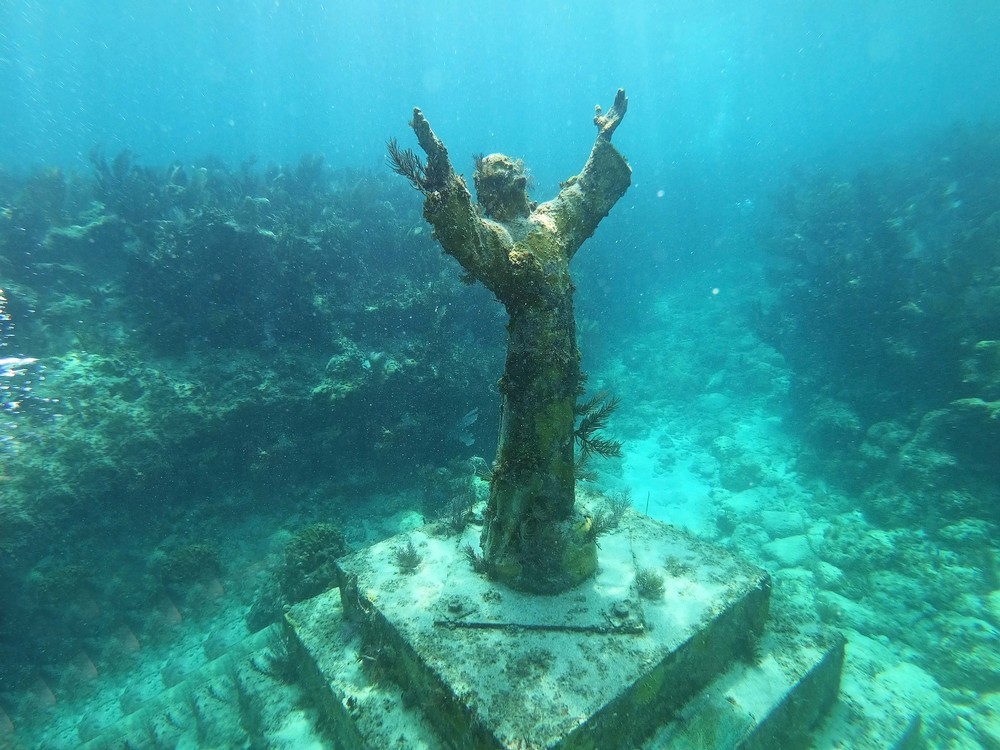Every day is an adventure in the Florida Keys, where the subtropical climate and scenic natural settings create the perfect backdrop for eco-adventure activities — such as exploring mangrove wilderness, tropical hardwood hammocks and rainforest areas, or simply strolling along sandy beaches.

Dagny Johnson Key Largo Hammock Botanical State Park features one of the largest tracts of West Indian tropical hardwood hammocks in the United States.
In the Upper Keys, backcountry waters fringe a treasured national park where you can experience unparalleled offshore water-sports amid the vast openness of the island chain’s abundant natural environment. Put one (or all!) of these “unplugged” Key Largo and Islamorada eco-experiences on your bucket list.
Hike one of the United States’ largest tracts of West Indian tropical hardwood hammock. The 2,683-acre Dagny Johnson Key Largo Hammock Botanical State Park is home to 84 protected animal and plant species including the Key Largo woodrat, American crocodile, wild cotton and mahogany mistletoe. Explore the park’s 6-plus miles of trails, including a half-mile paved section at the main entrance at State Road 905, a half-mile north of the intersection of the Florida Keys Overseas Highway and mile marker 106.
Snorkel the United States’ first undersea park. John Pennekamp Coral Reef State Park covers 70 nautical miles and is listed on the U.S. National Register of Historic Places. Located at mile marker 102.5, it’s famed for glass-bottom boat, snorkel and dive tours to surrounding coral reefs — and to the iconic nearby Christ of the Deep statue. With arms uplifted in a gesture of invitation, the 9-foot statue is considered an embodiment of peace and understanding among mankind. Visitors from around the world come to view and photograph the figure that rests in 25 feet of water.
Clean an undersea coral nursery tree. At the Coral Restoration Foundation’s Exploration Center at 5 Seagate Blvd. (near mile marker 99.6), you can learn the importance of the Florida Keys’ coral reefs — which together make up the continental United States’ only living coral barrier reef. Through the foundation’s educational efforts, recreational divers can actively participate in reef restoration dives. CRF manages the world’s largest coral nurseries, raising critically endangered coral species and planting them along the reef tract. Ocean lovers of all ages can join the CRF team to help bring those reefs back to life.

A great white heron perches on a mangrove at the Florida Keys Wild Bird Center. The center treats sick and injured indigenous birds. (Photo by Bob Krist, Florida Keys News Bureau)
Befriend herons, owls, pelicans and egrets at the Florida Keys Wild Bird Center, a nonprofit conservation center dedicated to the rescue, rehabilitation and release of native and migratory birds. The facility also provides habitat for some sick, injured and orphaned birds that can’t safely return to the wild. Wander the walkways within the center’s Laura Quinn Wild Bird Sanctuary, located at mile marker 93.6 in Tavernier, and learn about Keys wild bird species at the education center and gift shop.
Renew your spirit with a stroll along the boardwalk at Anne’s Beach. Lying at the southern end of Lower Matecumbe Key at mile marker 73.5 oceanside, Anne’s Beach is a locals’ favorite. It was named after the late Anne Eaton, a former resident who was instrumental in preserving its natural beauty and caring for the stretch of land for others’ enjoyment. A new, expansive handicapped-accessible boardwalk affords daytime strolls with 10 elevated shade structures, bathroom and outdoor shower.
Try standup paddling, or paddleboarding, an activity that combines mind and body relaxation with healthful exercise and a Keys eco-experience. The warm, clear, calm waters typical of summer months in the island chain allow easy exploration of the intriguing natural environment.
Enjoy bird watching in the Florida Keys. Bountiful avian sightings are possible at a dozen Keys native habitat stops along the South Florida segment of the Great Florida Birding Trail — including Dagny Johnson Key Largo Hammock Botanical State Park and Long Key State Park. You can view migrating species such as warblers, white-crowned pigeons, year-round tidal waders and spring-nesting sea birds, terns, noddies, boobies and some unique residents such as mangrove cuckoos and roseate spoonbills.
Volunteer with a Keys environmental organization. Visitors are always welcome who are interested in “voluntourism” — spending a portion of their vacation giving back to the local environment and its inhabitants. Causes range from reef restoration and beach clean-ups to donating time working at a wildlife refuge.
Want to find out more about Keys eco-experiences and protecting the island chain’s natural wonders? Just click here.

